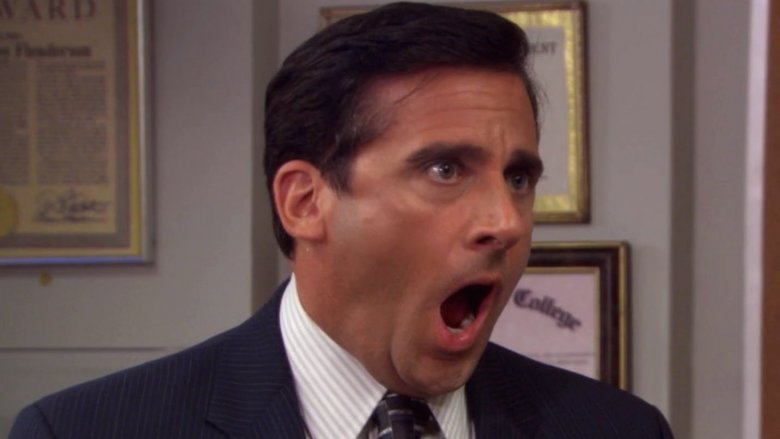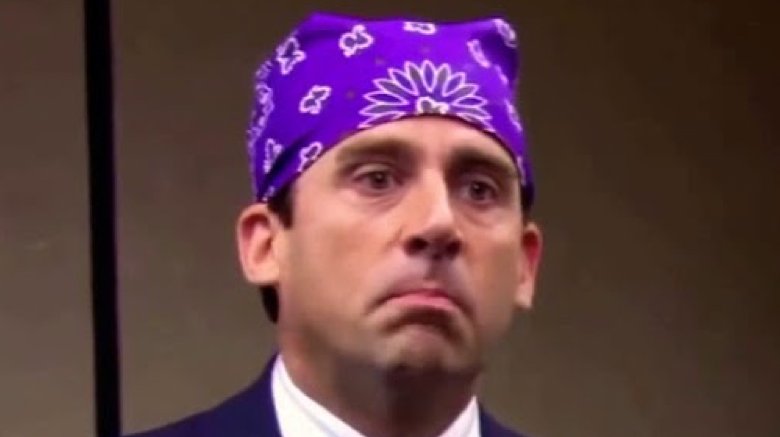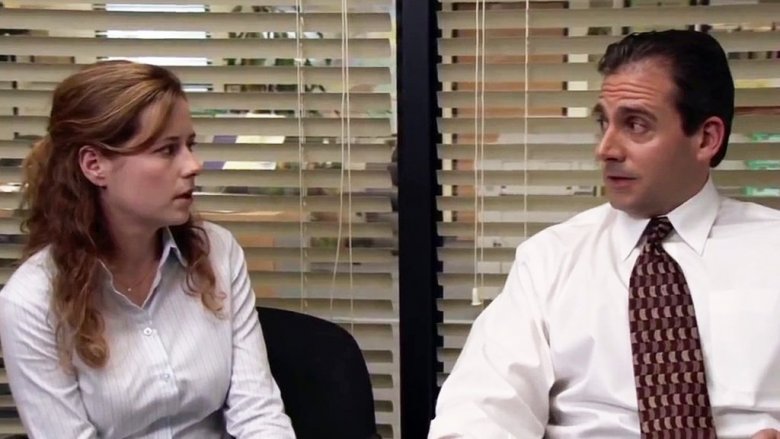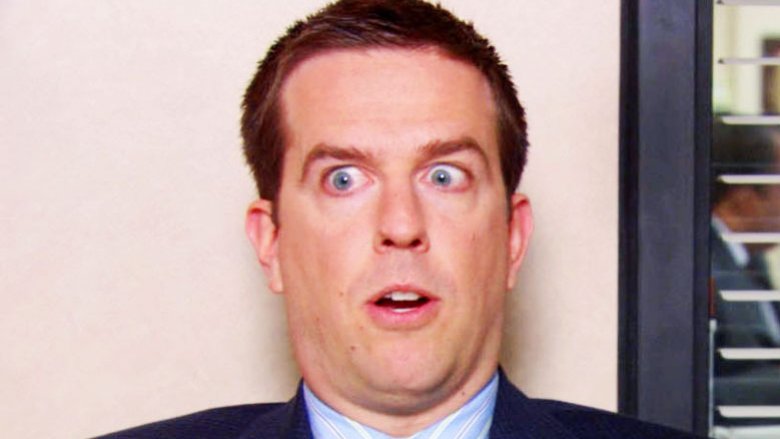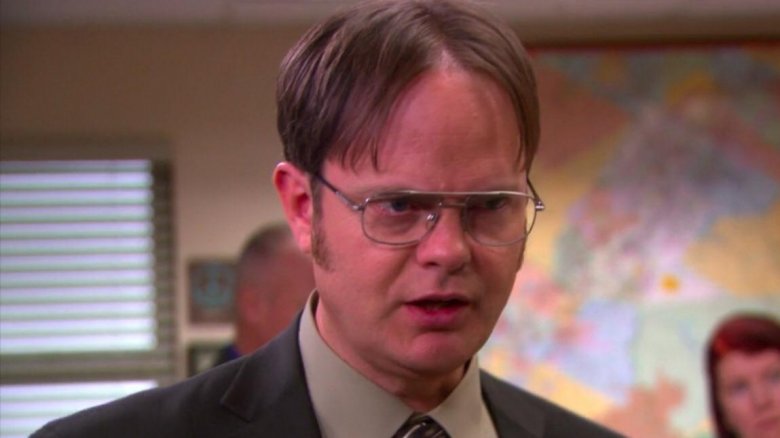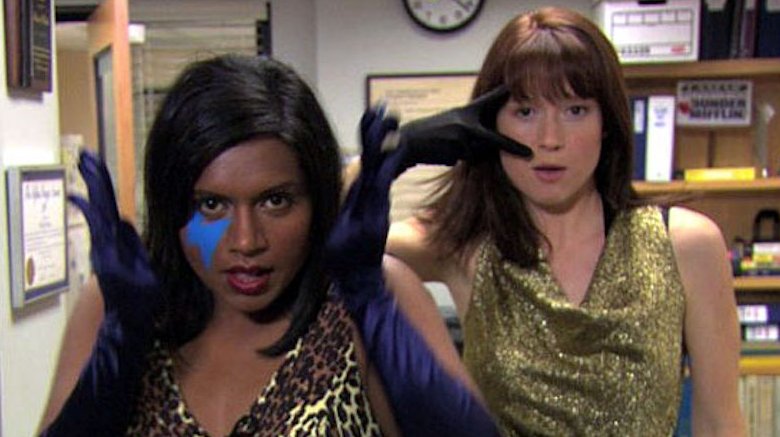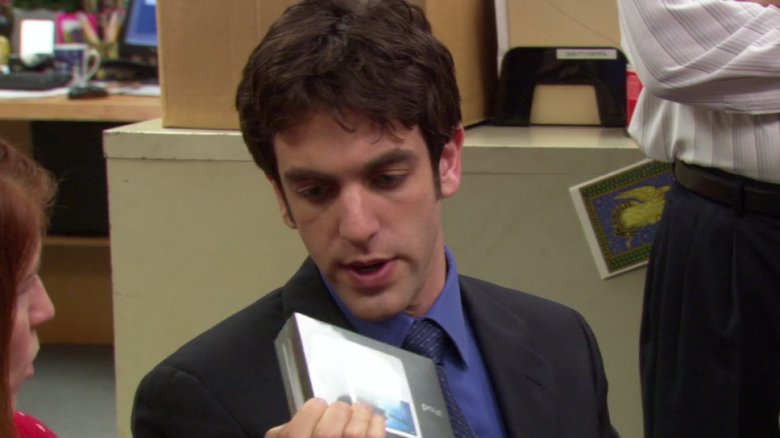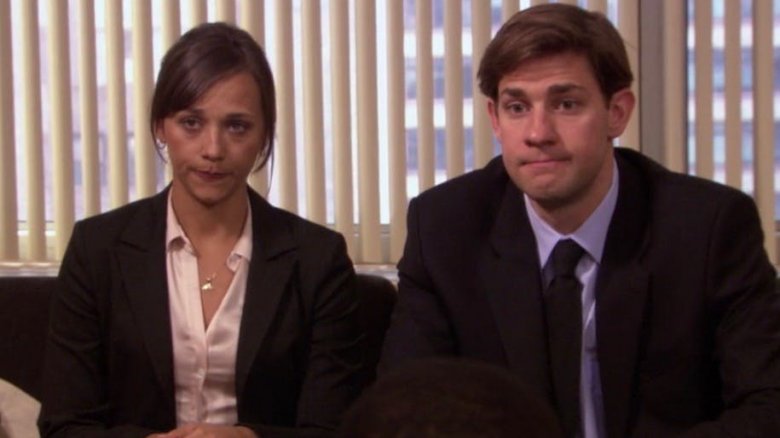How The Office Changed TV And No One Noticed
Thanks in large part to its popularity on multiple streaming platforms, The Office is a cultural touchstone and one of the most-loved sitcoms of all time. It's hard to believe that during its nine-season run on NBC (2005-2013), it never ranked higher than number 41 in the yearly Nielsen ratings, and somehow never netted an acting Emmy for stars like Steve Carell ("World's Best Boss" Michael Scott) or Rainn Wilson (assistant to the regional manager Dwight Schrute).
The show debuted as a midseason replacement in 2005, a seemingly ill-advised, Americanized version of the smash hit British series co-created by and starring Ricky Gervais. That's all well in the past now, as the U.S. Office has taken its place in the canon of television classics, shedding the notion that it was somehow an inferior remake. Instead, it revolutionized TV comedy. Here's how the men and women of Dunder Mifflin's Scranton branch permanently altered the entertainment landscape.
Michael Scott: the hero TV needed
In the "Peak TV" era, TV competes with movies in terms of good stories, compelling characters, and high production quality. A recurring element of Peak TV: the antihero. TV is rich with shows about morally conflicted (or even immoral) main characters that the audience still roots for because they're so compelling. It's a notion exemplified by Don Draper on Mad Men and Walter White on Breaking Bad, but before that, the idea got a big test run in the realm of comedy with Michael Scott of The Office.
Here is a man who inflicts his offensive comedy "characters" (Michael Klump, Prison Mike) onto his employees, savagely mocks human resources director Toby, and forcefully kisses a gay employee (Oscar) to prove he isn't homophobic. This is to say nothing of his shocking incompetence at his job as the boss of a paper company branch. If Michael Scott were a real-world boss, he'd have been fired a hundred times over. But on TV he's beloved, because Steve Carell brings humor, depth, and compassion to the character — the kind of stuff that Peak TV is all about.
The rise of cringe
For the vast history of American television comedy, the laughs (or at least the attempts to extract guffaws from the viewing audience) have come via a tried and true formula: exposition, then a joke set-up, and then the joke. Cue the laugh track. The Office turned that formula upside-down. Its comedy wasn't joke driven, but situational and character-driven, coming from relatable, realistic interactions. And, as in real life, those give-and-takes are sometimes extremely awkward and uncomfortable.
It's a concept called "cringe comedy" because audiences may literally squirm as the characters on screen do odious but hilarious things that would be unbearable in real life. When Michael Scott fails to deliver on his years-long promise to pay for college for a bunch of kids, it's extremely uncomfortable. It's also very funny because it's so over-the-top terrible — it doesn't feel like a contrived, silly sitcom premise because it seems like just the kind of boneheaded mistake of which Michael Scott is capable. Although there were certainly earlier examples, like Curb Your Enthusiasm, The Office perfected and popularized cringe comedy for network TV, and the mantle would get picked up by shows like The Comeback and Veep.
Who needs three cameras anyway?
For decades, nearly all sitcoms were produced in the "three-camera" or "four-camera" format, in which that many cameras would remain mostly stationary and capture whatever happened on a well-lit, fake-looking set, and on videotape no less. That style made episodes of everything from All in the Family to Growing Pains to Everybody Loves Raymond felt like little stage plays. While that method persists on shows like Mom and The Conners, most sitcoms now go for a realistic feel, eschewing the artificial and saturated look of videotape for the warmer look of film (or film-like digital video). They also shoot like a movie, with individual shots of actors acting and reacting instead of performing all at once on a soundstage.
While a few examples exist before The Office of this "single-camera" style (Malcolm in the Middle, The Andy Griffith Show), the format exploded after The Office (both British and American versions) presented itself as a shot-on-film fake documentary. Utilizing that cinematic style in the years since: Community, The Good Place, Atlanta, Brooklyn Nine-Nine, Girls, 30 Rock, New Girl... in short, single-camera has become the dominant format in a way it never was before a "documentary crew" took us inside Dunder Mifflin Scranton.
The Office kept reality TV in check
With the instant popularity of shows like Big Brother and Survivor, reality TV took off on American television around the turn of the new millennium. And then it stuck around, becoming a permanent TV genre. That represented a major shift: American TV had quickly evolved from fully-scripted fare to include programs ostensibly based on real people in real situations, captured by ever-present camera crews. Something needed to come along to reflect and comment on this rapid cultural development, and that something was The Office. It responded to reality TV by mocking it.
The show's original premise grew obscured over time, but the Scranton branch of Dunder Mifflin was the subject of a TV documentary called An American Workplace. The Office was a "mockumentary" in the style of films like This is Spinal Tap or Best in Show, and that style pointed out that viewers shouldn't take actual reality TV too seriously. With The Office laying the groundwork, that fake documentary/mock reality show became a prominent subgenre of comedy. Shows like Modern Family, Parks and Recreation, American Vandal, and The Comeback followed its lead.
A tangled web The Office wove
Lots of popular TV shows offer standalone bonus videos via a network website or YouTube. One day after an episode airs, Saturday Night Live will post online bits that didn't make the broadcast, either pre-recorded sketches or ones performed for a live audience at a dress rehearsal. Scripted drama shows or sitcoms may distribute fully-produced deleted scenes. And then there are "webisodes" (web + episodes), a finite series of episodes set inside a show's universe that tell an interesting side story, made just for internet consumption.
Fear the Walking Dead spun-off a serial called "Flight 462," about a zombie outbreak on an airplane. Heroes, Lost, Breaking Bad, and Smallville offered webisodes, too. The Office was an early and prolific adopter of the format, distributing nine webisode miniseries over its long run, all focused on the show's deep roster of side characters. Among them: "The Accountants" (about Kevin, Angela, and Oscar), "Blackmail" (kooky Creed decides to get into blackmail), and "The Podcast" (sad-sack Gabe tries to start one).
The Office took digital out of the underground
Not only did The Office embrace the internet and give dedicated fans extra content in the digital realm, but its producers and network recognized early on that the way people consumed TV was changing fast. It's fitting that The Office became such a hit on a streaming platform like Netflix, because during its run, the show was one of the first available via the internet. In 2005, Apple expanded its iTunes Store and line of iPod music players to include video. Users could pay a couple of bucks and download an episode of a show, allowing them to watch it on their computers when they wanted, or on the go on a brand new video-enabled iPod. It sure beat taping episodes with a VCR, and was even more technologically advanced than a DVR.
One of the first networks to sign on for this way to make money off of the shows viewers could otherwise watch on TV for free: NBC, which highlighted The Office as a downloadable option. The Office did its part with a December 2005 episode centered around Michael Scott buying a very nice gift for Ryan Howard, his "Yankee Swap" recipient: a video-enabled iPod.
Not just an office, but a training ground
In addition to directly changing the way TV is conceived, produced, and distributed, The Office has another legacy: its cast and crew scattered around Hollywood and became powerful content creators. Steve Carell became an A-list actor, thanks in part to a big 2005 — The Office debuted just a couple of months before The 40-Year-Old Virgin hit movie theaters. Along with a bunch of big movies (and an Oscar nomination for Foxcatcher), he's stayed busy behind the scenes on TV. He even co-created the silly TBS comedy Angie Tribeca, starring and produced by his former Office co-star Rashida Jones, who has also worked behind-the-scenes on movies like Celeste & Jesse Forever and Toy Story 4. John Krasinski became a filmmaker, directing movies like A Quiet Place. Mindy Kaling left The Office, where she both portrayed Kelly Kapoor and served as a writer, to create more TV, including The Mindy Project. And speaking of making TV happen, former Office writer Michael Schur co-created three beloved and critically-acclaimed comedy shows: Parks and Recreation, Brooklyn Nine-Nine, and The Good Place.
